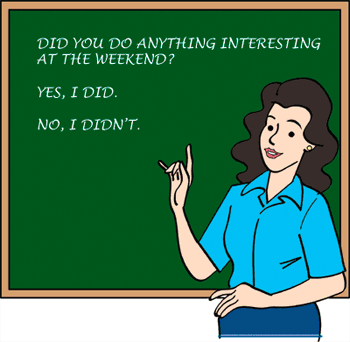Many English Learner faces difficulty with the past simple tense. The number of uneven verbs can be demoralizing and the three different sounds of uneven verbs cause problems. But through good practice and tips you can easily understand this tense.
The problem with the past simple tense is due to pronunciation while the regular verbs rule is quite simple and easy. It is not easy to memorize and apply the three different sounds that follow the verb rules. –t, -d, and –id are the different sounds where first two need practice while the last one quite easy to remember. Instead of remembering and applying different rules, the most excellent way to practice each sound from common examples and repeat them over again. Through practice you will become more familiarized to the preceding sounds and will automatically begin to know each sound ending to use.
The uneven verbs cause a different type of difficulty as they don't follow the general rules. You can learn these uneven verbs from different language schools and through course books and different grammar books having table of irregular verbs in the appendix. These uneven verb tables are very important. Through practice and repetitive exercise by using these uneven verbs in different form make it ultimately easier to memorize them. The most common verbs are uneven so keep it in mind because this will greatly helps you to understand and remembering them in no time.

In our daily lives we use simple past tense regularly, so don’t stop practice if you want to expose yourself among English speakers and have frequent conversations. The best ways of practice includes: talking about your past life and university life, writing and speaking about your weekend programs. These are the excellent ways if you don’t have enough opportunity to speak English. This is very rare that you don’t have anyone to practice your speaking, but alternatively you can record your voice and assess yourself.

I hope you above mentioned tips would be helpful to improve your past simple tense although the past simple tense has some complicated features but through practice and regular use in writing and speaking makes you free and comfortable.
You have read this article Learn Past Simple Tense
with the title November 2011. You can bookmark this page URL https://apostolosmakrides.blogspot.com/2011/11/how-to-learn-past-simple-tense.html. Thanks!




















